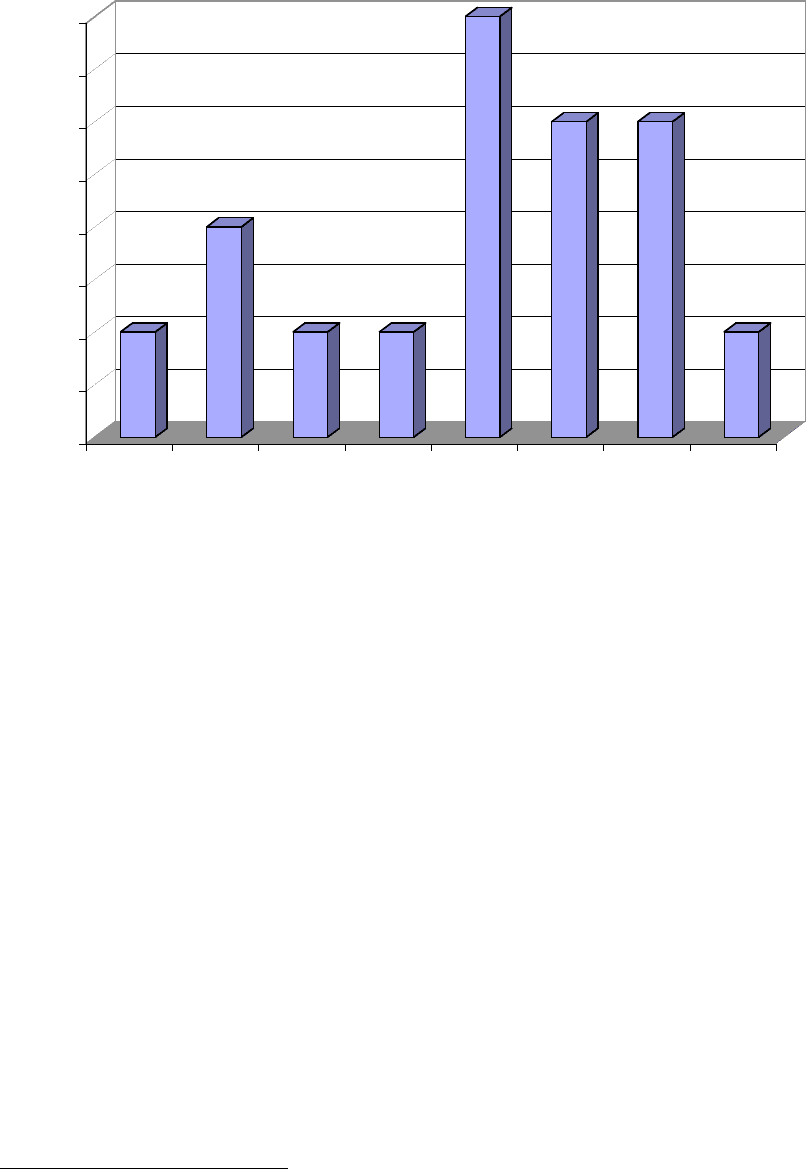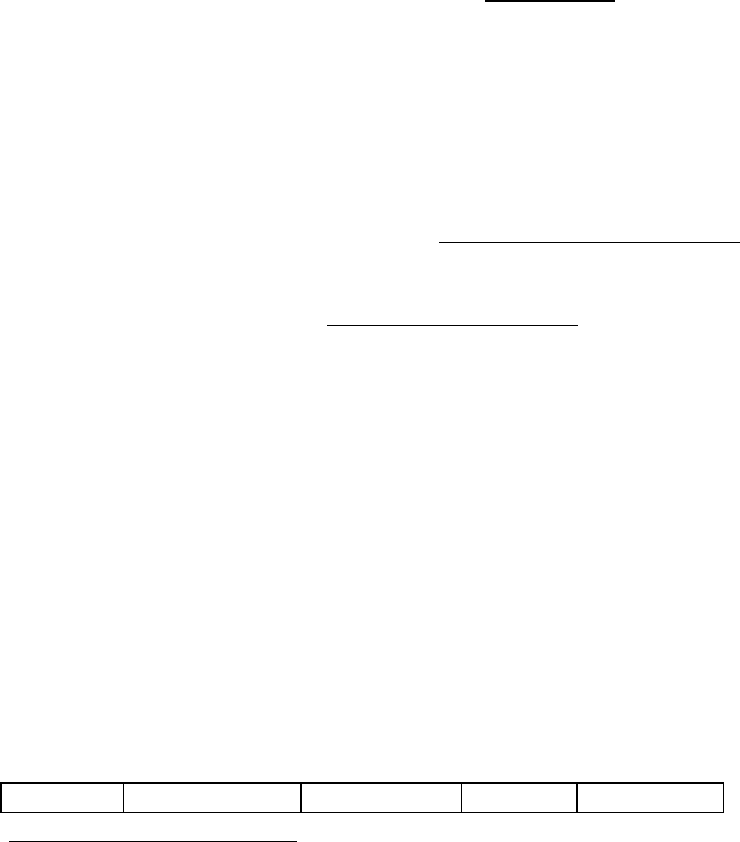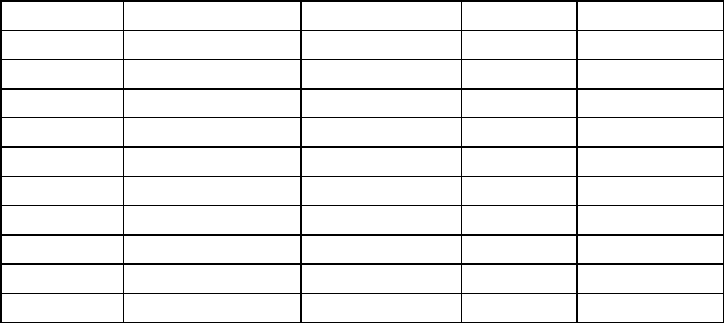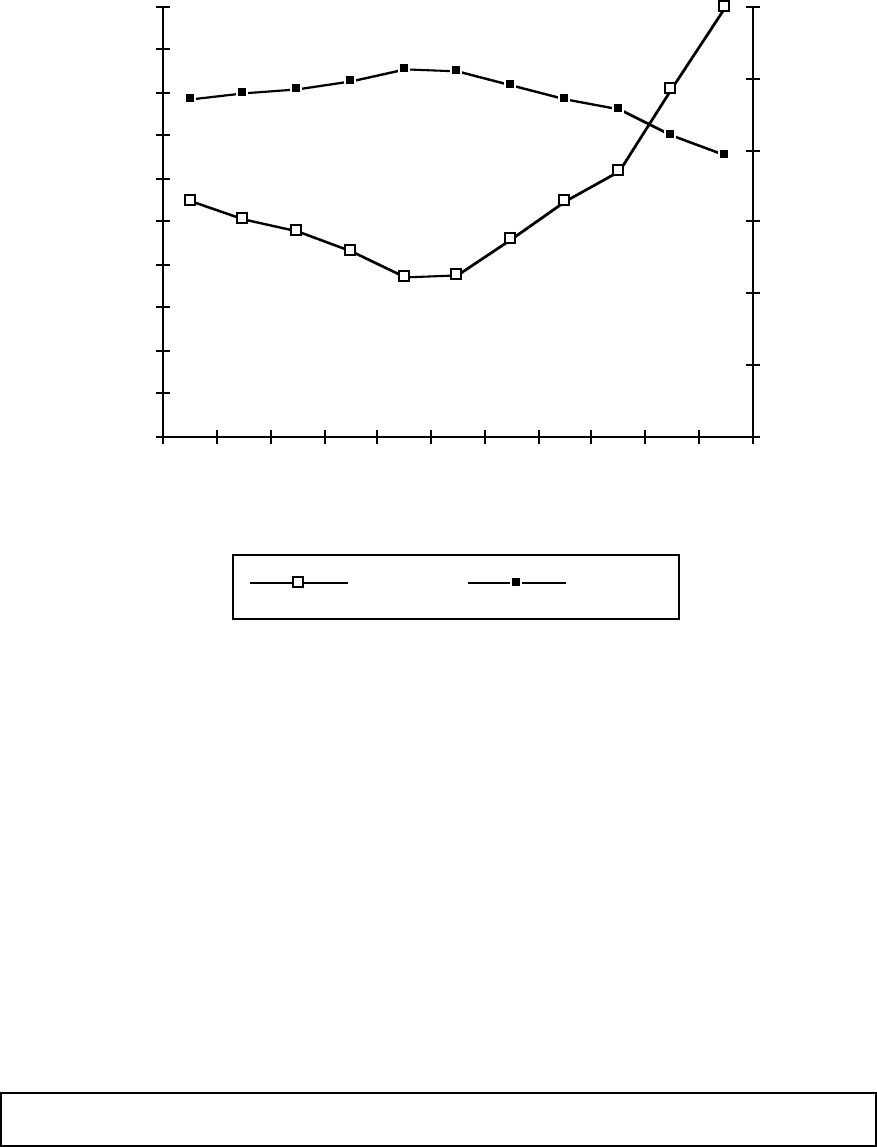Damodaran A. Applied corporate finance
Подождите немного. Документ загружается.

2
2
Steps in Applying Operating Income Approach
We begin with an analysis of a firm’s operating income and cash flows, and we
consider how much debt it can afford to carry based upon its cash flows. The steps in the
operating income approach are as follows:
1. We assess the firm’s capacity to generate operating income based upon both current
conditions and past history. The result is a distribution for expected operating income,
with probabilities attached to different levels of income.
2. For any given level of debt, we estimate the interest and principal payments that have
to be made over time.
3. Given the probability distribution of operating cash flows and the debt payments, we
can estimate the probability that the firm will be unable to make those payments.
4. We set a limit on the probability of its being unable to meet debt payments. Clearly,
the more conservative the management of the firm, the lower this probability constraint
will be.
5. We compare the estimated probability of default at a given level of debt to the
probability constraint. If the probability of default is higher than the constraint, the firm
chooses a lower level of debt; if it is lower than the constraint, the firm chooses a higher
level of debt.
Illustration 8.1: Estimating Debt Capacity Based Upon Operating Income Distribution
In the following analysis, we apply the operating income approach to analyzing
whether Disney should issue an additional $ 5 billion in new debt.
Step 1: We derive a probability distribution for expected operating income from Disney’s
historical earnings and estimate operating income changes from 1988 to 2003 and present
it in figure 8.1.

3
3
0
0.5
1
1.5
2
2.5
3
3.5
4
Drop more than
20%
Decline 10%-
20%
Decline 0-10% Increase 0-10% Increase 10-
20%
Increase 20-
30%
Increase 30-
40%
Increase more
than 40%
Percentage change in annual operating income
Figure 8.1: Disney: Operating Income Changes - 1988-2003
The average change in operating income on an annual basis over the period was 10.09%,
and the standard deviation in the annual changes is 19.54%. If we assume that the
changes are normally distributed, these statistics are sufficient for us to compute the
approximate probability of being unable to meet the specified debt payments.
Step 2: We estimate the interest and principal payments on a proposed bond issue of $ 5
billion by assuming that the debt will be rated BBB, lower than Disney’s current bond
rating of BBB+
1
. Based upon this rating, we estimated an interest rate of 5.5% on the
debt. In addition, we assume that the sinking fund payment set aside to repay the bonds is
5% of the bond issue. This results in an annual debt payment of $ 550 million–
Additional Debt Payment = Interest Expense + Sinking Fund Payment
= 0.055 * 5,000 + .05 * 5,000 = $ 525 million
The total debt payment then can be computed by adding the interest payment on existing
debt in 2003–– $ 666 million –– as well as the operating lease expenses from 2003 - $
1
This is Disney’s current bond rating.

4
4
556 million - to the additional debt payment that will be created by taking on $ 5 billion
in additional debt.
Total Debt Payment = Interest on Existing Debt + Operating lease expense + Additional
Debt Payment = $ 666 million + $ 556 million + $ 525 million = $ 1,747 million
Step 3: We can now estimate the probability
2
of default from the distribution of operating
income by assuming that the percentage changes in operating income are normally
distributed and by considering the operating income of $ 2,713 million that Disney
earned in 2003 as the base year income.
T statistic = (Current EBIT- Debt Payment) / σ
OI
(Current Operating Income)
= ($ 2,713- $ 1747 million) / (.1954 * $2713) = 1.82
Based upon the t statistic, the probability that Disney will be unable to meet its debt
payments in the next year is 3.42%.
Step 4: Assume that the management at Disney set a constraint that the probability of
default be no greater than 5%.
Step 5: Since the estimated probability of default is indeed less than 5%, Disney can
afford to borrow more than $ 5 billion. If the distribution of operating income changes is
normal, we can estimate the level of debt payments Disney can afford to make for a
probability of default of 5%.
T statistic for 5% probability level = 1.645
Consequently, the debt payment can be estimated as
($2,713 - X)/ (.1954* $2,713) = 1.645
Solving for X, we estimate a breakeven debt payment of -
Break Even Debt Payment = $ 1,841 million
Subtracting out the existing interest and lease payments from this amount yields a break-
even additional debt payment of $619 million
Break-Even Additional Debt Payment = 1841- 666 – 556 = $619 million
2
This is the probability of defaulting on interest payments in one period. The cumulative probability of
default over time will be much higher.

5
5
If we assume that the interest rate remains unchanged at 5.5% and the sinking fund will
remain at 5% of the outstanding debt, this yields an optimal debt level of $ 5,895 million.
Optimal Debt Level = Break Even Debt Payment / (Interest Rate + Sinking Fund Rate)
= $ 619 / (.055 + .05) = $ 5,895 million
The optimal debt level will be lower if the interest rate increases as Disney borrows more
money.
Limitations of the Operating Income Approach
Although this approach may be intuitive and simple, it has some drawbacks. First,
estimating a distribution for operating income is not as easy as it sounds, especially for
firms in businesses that are changing and volatile. For instance, the operating income of
firms can vary widely from year to year, depending upon the success or failure of
individual products. Second, even when we can estimate a distribution, the distribution
may not fit the parameters of a normal distribution, and the annual changes in operating
income may not reflect the risk of consecutive bad years. This can be remedied by
calculating the statistics based upon multiple years of data. For Disney, in the above
example, if operating income is computed over rolling two-year periods
3
, the standard
deviation will increase and the optimal debt ratio will decrease..
This approach is an extremely conservative way of setting debt policy because it
assumes that debt payments have to be made out of a firm’s cash balances and operating
income and that the firm has no access to financial markets. Finally, the probability
constraint set by management is subjective and may reflect management concerns more
than stockholder interests. For instance, management may decide that it wants no chance
of default and refuse to borrow money as a consequence.
Refinements on the Operating Income Approach
The operating income approach described in this section is simplistic because it is
based upon historical data and the assumption that operating income changes are
3
By rolling two-year periods, we mean 1980 & 1981, 1981 & 1982, 1982 & 1983 .... The resulting
standard deviation is corrected for the multiple counting of the same observations.

6
6
normally distributed. We can make it more sophisticated and robust by making relatively
small changes:
• You can look at simulations of different possible outcomes for operating income,
rather than looking at historical data; the distributions of the outcomes are based
both upon past data and upon expectations for the future.
• Instead of evaluating just the risk of defaulting on debt, you can consider the
indirect bankruptcy costs that can accrue to a firm, if operating income drops
below a specified level.
• You can compute the present value of the tax benefits from the interest payments
on the debt, across simulations, and thus compare the expected cost of bankruptcy
to the expected tax benefits from borrowing.
With thee changes, you can look at different financing mixes for a firm, and estimate
the optimal debt ratio as that mix that maximizes the firm’s value.
4
Cost of Capital Approach
In chapters 3 and 4, we estimated the minimum acceptable hurdle rates for equity
investors (the cost of equity), and for all investors in the firm - (the cost of capital). We
defined the cost of capital to be the weighted average of the costs of the different
components of financing –– including debt, equity and hybrid securities –– used by a
firm to fund its financial requirements. By altering the weights of the different
components, firms might be able to change their cost of capital
5
. In the cost of capital
approach, we estimate the costs of debt and equity at different debt ratios, use these costs
to compute the costs of capital, and look for the mix of debt and equity that yields the
lowest cost of capital for the firm. At this cost of capital, we will argue that firm value is
maximized.
6
.
4
Opler, Grinblatt and Titman have an extended discussion of this approach.
5
If capital structure is irrelevant, the cost of capital will be unchanged as the capital structure is altered.
6
If capital structure is irrelevant, the cost of capital will be unchanged as the capital structure is altered.

7
7
Definition of the Weighted Average Cost of Capital (WACC)
The weighted average cost of capital (WACC) is defined as the weighted average
of the costs of the different components of financing used by a firm.
WACC = k
e
( E/ (D+E+PS)) + k
d
( D/ (D+E+PS)) + k
ps
( PS/ (D+E+PS))
where WACC is the weighted average cost of capital, k
e
, k
d
and k
ps
are the costs of
equity, debt and preferred stock, and E, D and PS are their respective market values.
The estimation of the costs of the individual components - equity, debt, and
preferred stock, and of the weights in the cost of capital formulation are explored in detail
in Chapter 4. To summarize:
• The cost of equity should reflect the riskiness of an equity investment in the
company. The standard models for risk and return –– the capital asset pricing model
and the arbitrage pricing model –– measure risk in terms of market risk, and convert
the risk measure into an expected return.
• The cost of debt should reflect the default risk of the firm - the higher the default risk,
the greater the cost of debt - and the tax advantage associated with debt - interest is
tax deductible.
Cost of Debt = Pre-tax Interest Rate on Borrowing (1 - tax rate)
• The cost of preferred stock should reflect the preferred dividend and the absence of
tax deductibility.
Cost of Preferred Stock = Preferred Dividend / Preferred Stock Price
• The weights used for the individual components should be market value weights
rather than book value weights.
The Role of Cost of Capital in Investment Analysis and Valuation
In order to understand the relationship between the cost of capital and optimal
capital structure, we first have to establish the relationship between firm value and the
cost of capital. In chapter 5, we noted that the value of a project to a firm could be
computed by discounting the expected cash flows on it at a rate that reflected the
riskiness of the cash flows, and that the analysis could be done either from the viewpoint
of equity investors alone or from the viewpoint of the entire firm. In the latter approach,
we discounted the cash flows to the firm on the project, i.e., the project cash flows prior

8
8
to debt payments but after taxes, at the project’s cost of capital. Extending this principle,
the value of the entire firm can be estimated by discounting the aggregate expected cash
flows over time at the firm’s cost of capital. The firm’s aggregate cash flows can be
estimated as cash flows after operating expenses, taxes and any capital investments
needed to create future growth in both fixed assets and working capital.
Cash Flow to Firm = EBIT (1-t) - (Capital Expenditures - Depreciation) - Change
in Working Capital
The value of the firm can then be written as –
Value of Firm =
CF to Firm
t
(1+ WACC)
t
t=1
t=n
!
The value of a firm is therefore a function of its cash flows and its cost of capital. In the
specific case where the cash flows to the firm are unaffected as the debt/equity mix is
changed, and the cost of capital is reduced, the value of the firm will increase. If the
objective in choosing the financing mix for the firm is the maximization of firm value,
this can be accomplished, in this case, by minimizing the cost of capital. In the more
general case where the cash flows to the firm are a function of the debt-equity mix, the
optimal financing mix is the one that maximizes firm value.
7
The optimal financing mix for a firm is simple to compute if one is provided with
a schedule that relates the costs of equity and debt to the leverage of the firm.
Illustration 8.2: WACC, Firm Value, and Leverage
Assume that you are given the costs of equity and debt at different debt levels for
Belfan’s, a leading manufacturer of chocolates and other candies, and that the cash flows
to this firm are currently $200 million. Belfan’s is in a relatively stable market, and these
cash flows are expected to grow at 6% forever, and are unaffected by the debt ratio of the
firm. The WACC schedule is provided in Table 8.1, along with the value of the firm at
each level of debt.
Table 8.1: WACC, Firm Value and Debt Ratios
D/(D+E)
Cost of Equity
Cost of Debt
WACC
Firm Value
7
In other words, the value of the firm might not be maximized at the point that cost of capital is minimized,
if firm cash flows are much lower at that level.

9
9
0
10.50%
4.80%
10.50%
$4,711
10%
11.00%
5.10%
10.41%
$4,807
20%
11.60%
5.40%
10.36%
$4,862
30%
12.30%
5.52%
10.27%
$4,970
40%
13.10%
5.70%
10.14%
$5,121
50%
14.00%
6.30%
10.15%
$5,108
60%
15.00%
7.20%
10.32%
$4,907
70%
16.10%
8.10%
10.50%
$4,711
80%
17.20%
9.00%
10.64%
$4,569
90%
18.40%
10.20%
11.02%
$4,223
100%
19.70%
11.40%
11.40%
$3,926
Note that the value of the firm = Cash flows to firm*(1+g)/ (WACC - g)
= $200 * 1.06 / (WACC - .06)
The value of the firm increases (decreases) as the WACC decreases (increases), as
illustrated in Figure 8.2.

10
10
WACC AND FIRM VALUE AS A FUNCTION OF LEVERAGE
D/(D+E)
WACC
9.40%
9.60%
9.80%
10.00%
10.20%
10.40%
10.60%
10.80%
11.00%
11.20%
11.40%
0
10%
20%
30%
40%
50%
60%
70%
80%
90%
100%
$0
$1,000
$2,000
$3,000
$4,000
$5,000
$6,000
Firm Value
WACC
Firm Value
While this illustration makes the choice of an optimal financing mix seem trivial, it
obscures some real problems that may arise in its applications. First, an analyst typically
does not have the benefit of having the entire schedule of costs of financing prior to an
analysis. In most cases, the only level of debt about which there is any certainty about the
cost of financing is the current level. Second, the analysis assumes implicitly that the
level of cash flows to the firm is unaffected by the financing mix of the firm and,
consequently, by the default risk (or bond rating) for the firm. While this may be
reasonable in some cases, it might not in others. For instance, a firm that manufactures
consumer durables (cars, televisions etc.) might find that its sales drop if its default risk
increases because investors are reluctant to buy its products.
8.1. ☞: Minimizing Cost of Capital and Maximizing Firm Value

11
11
A lower cost of capital will lead to a higher firm value only if
a. the operating income does not change as the cost of capital declines
b. the operating income goes up as the cost of capital goes down
c. any decline in operating income is offset by the lower cost of capital
Steps in the Cost of Capital Approach
We need three basic inputs to compute the cost of capital – the cost of equity, the
after-tax cost of debt and the weights on debt and equity. The costs of equity and debt
change as the debt ratio changes, and the primary challenge of this approach is in
estimating each of these inputs.
Let us begin with the cost of equity. In chapter 4, we argued that the beta of equity
will change as the debt ratio changes. In fact, we estimated the levered beta as a function
of the debt to equity ratio of a firm, the unlevered beta and the firm’s marginal tax rate:
β
levered
= β
unlevered
[1+(1-t)Debt/Equity]
Thus, if we can estimate the unlevered beta for a firm, we can use it to estimate the
levered beta of the firm at every debt ratio. This levered beta can then be used to compute
the cost of equity at each debt ratio.
Cost of Equity = Riskfree rate + β
levered
(Risk Premium)
The cost of debt for a firm is a function of the firm’s default risk. As firms borrow
more, their default risk will increase and so will the cost of debt. If we use bond ratings as
our measure of default risk, we can estimate the cost of debt in three steps. First, we
estimate a firm’s dollar debt and interest expenses at each debt ratio; as firms increase
their debt ratio, both dollar debt and interest expenses will rise. Second, at each debt
level, we compute a financial ratio or ratios that measures default risk and use the ratio(s)
to estimate a rating for the firm; again, as firms borrow more, this rating will decline.
Third, a default spread, based upon the estimated rating, is added on to the riskfree rate to
arrive at the pre-tax cost of debt. Applying the marginal tax rate to this pre-tax cost yields
an after-tax cost of debt.
Once we estimate the costs of equity and debt at each debt level, we weight them
based upon the proportions used of each to estimate the cost of capital. While we have
not explicitly allowed for a preferred stock component in this process, we can have
